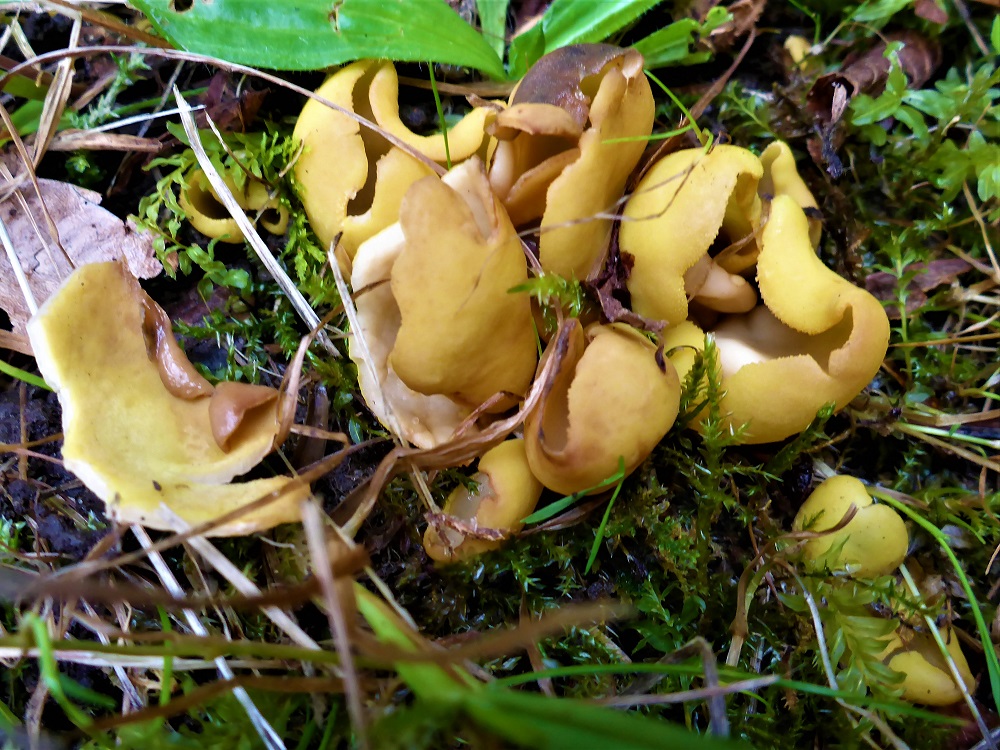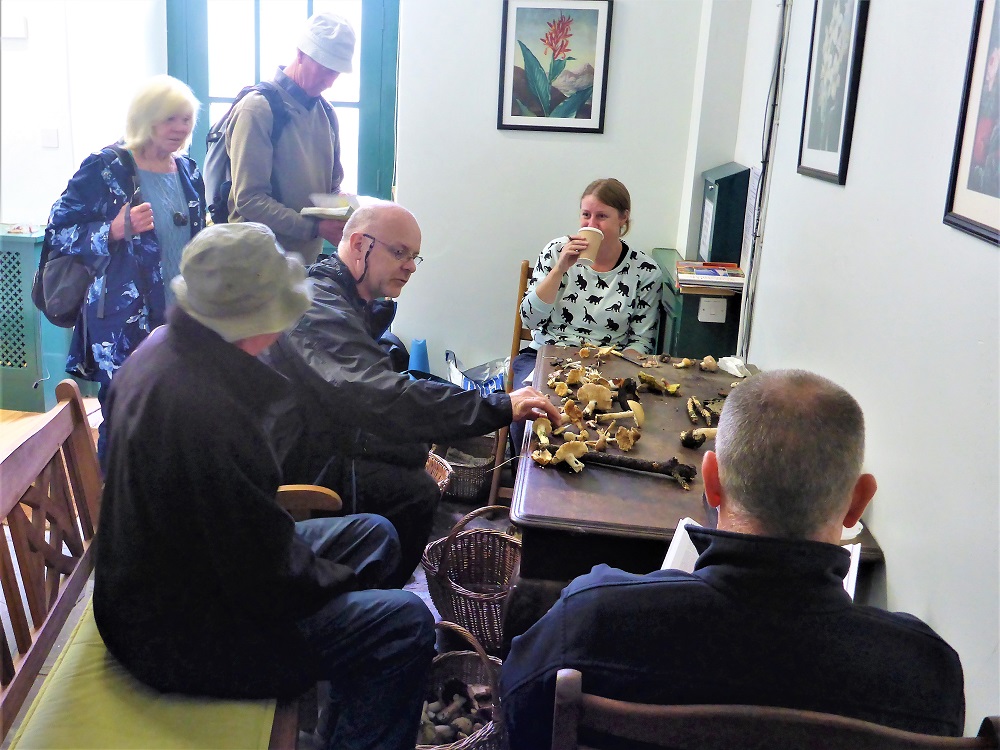Forum Replies Created
-
AuthorPosts
-
August 22, 2018 at 8:14 pm in reply to: FORAY REPORT , HOWICK HALL , SUNDAY 19th AUGUST (by Mike C) #3084JohnKeymasterJohnKeymasterJohnKeymaster
POP UP FORAY REPORT , CHILLINGHAM , SAT 9th SEPT
Our foray had been on/off many times since Sally first proposed it last year . After not getting permission from Sir Humphry to foray inside the castle grounds , although she did have a personal invitation , we proposed a walk around the Chillingham Estate on the permissive paths there . It went ahead with 10 more Northerly members , with the exception of Rhona and John who happened to be camping nearby . It also included new recruit Sheila Lillie , who has a good knowledge of fungi being taught by Roy Watling .
A successful foray ensued with only a brief shower and excellent views of the surrounding hills etc. plus close ups of the famous Chillingham Wild Cattle that have lived there for over 700 years and are the sole survivors of ancient cattle that once roamed the forests of Britain .
Members , unusually , all went upslope from the initial FP through the woods , thus confusing Keith and Sheila who continued along the bottom and thinking we were ahead tried to catch up and thus ended further and further away from the main group . Frantic phone calls and grid references eventually restored calm .
Some old trees provided interesting finds , including Dog Stinkhorn , many russulas and tricholomas and a possible seafaring cortinarius . There were further discussions about kuehneromyces mutabilis / galerina marginata continued from Hareshaw Linn ! Lunch for some was on large hay bales , afterwards we proceeded upwards through pines etc. and along forest tracks . Dom found his usual Ear Pick fungus and Snaketongue Truffleclub amongst the pines and along the path the Common Bird’s Nest fungus was observed as was the pure White Domecap , lyophyllum connatum .
Excitingly we saw a herd of deer leaping across the fields and Sally found a young adder in the middle of the path which she lifted to the side . Unfortunately she soon realised it had probably been stood on , there were 3 hefty forayers marching ahead of us , she thought it’s neck was broken . Even the sun brought no life to it so she took it home for son Joe to see . Incidentally in March , around the same spot , there was a dead piglet lying on the track , no farms nearby , all very spooky…….
There was a short cut back which went near the Chillingham Wild Cattle . I was prepared to venture on it , but everyone else thought better of it , could it have been the numerous graphic signs of a person being gored with blood dripping that deterred them
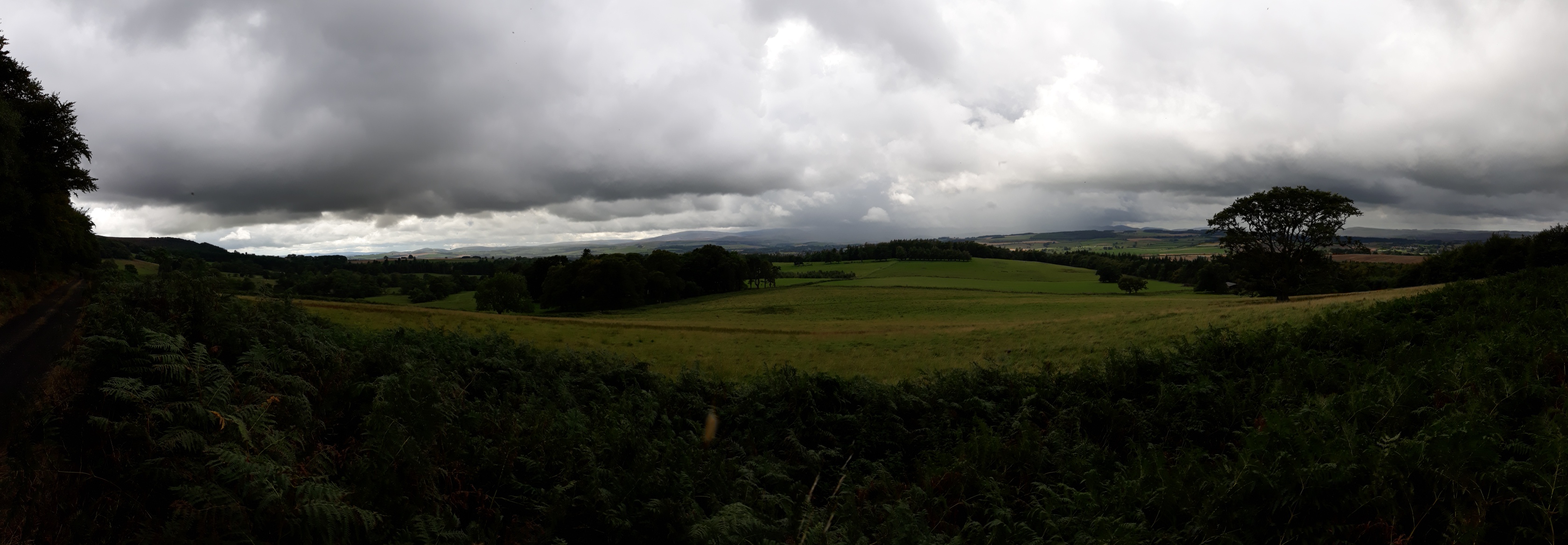
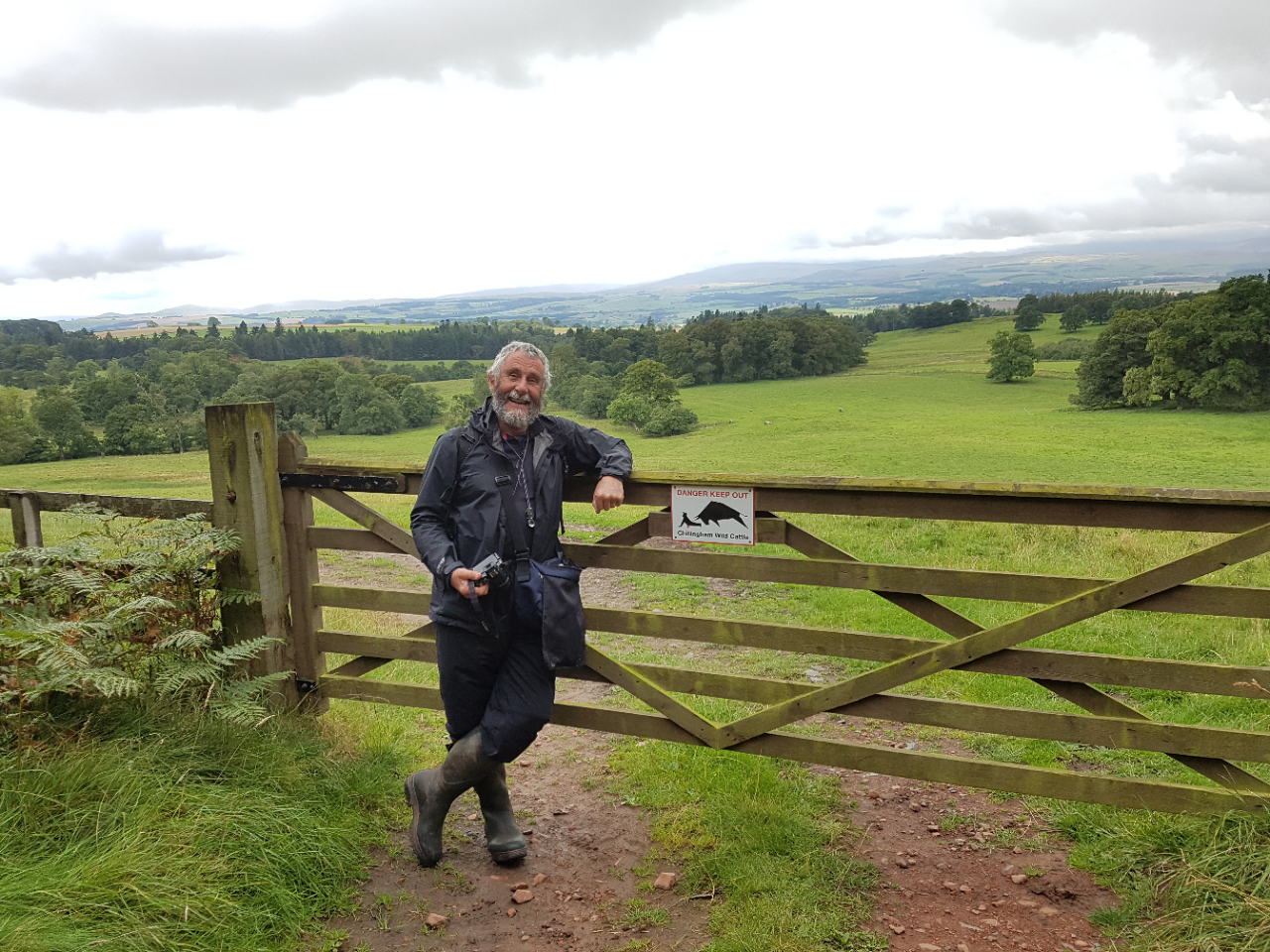 JohnKeymaster
JohnKeymasterThe spiky spores look like they have apiculi. Did you find any basidia? If there are no basidia, do you think the spiky spores are just accidental visitors?
A vertical cross section through the “wart” might help to identify whether it is an asco, but I realise it is probably an impossibility with dry material. If any more turn up in fresh material we would try embedding some and taking a vertical slice.
Cheers,
JohnJohnKeymasterThis was found nearby by Dom. It appears it is completely different to the one above.
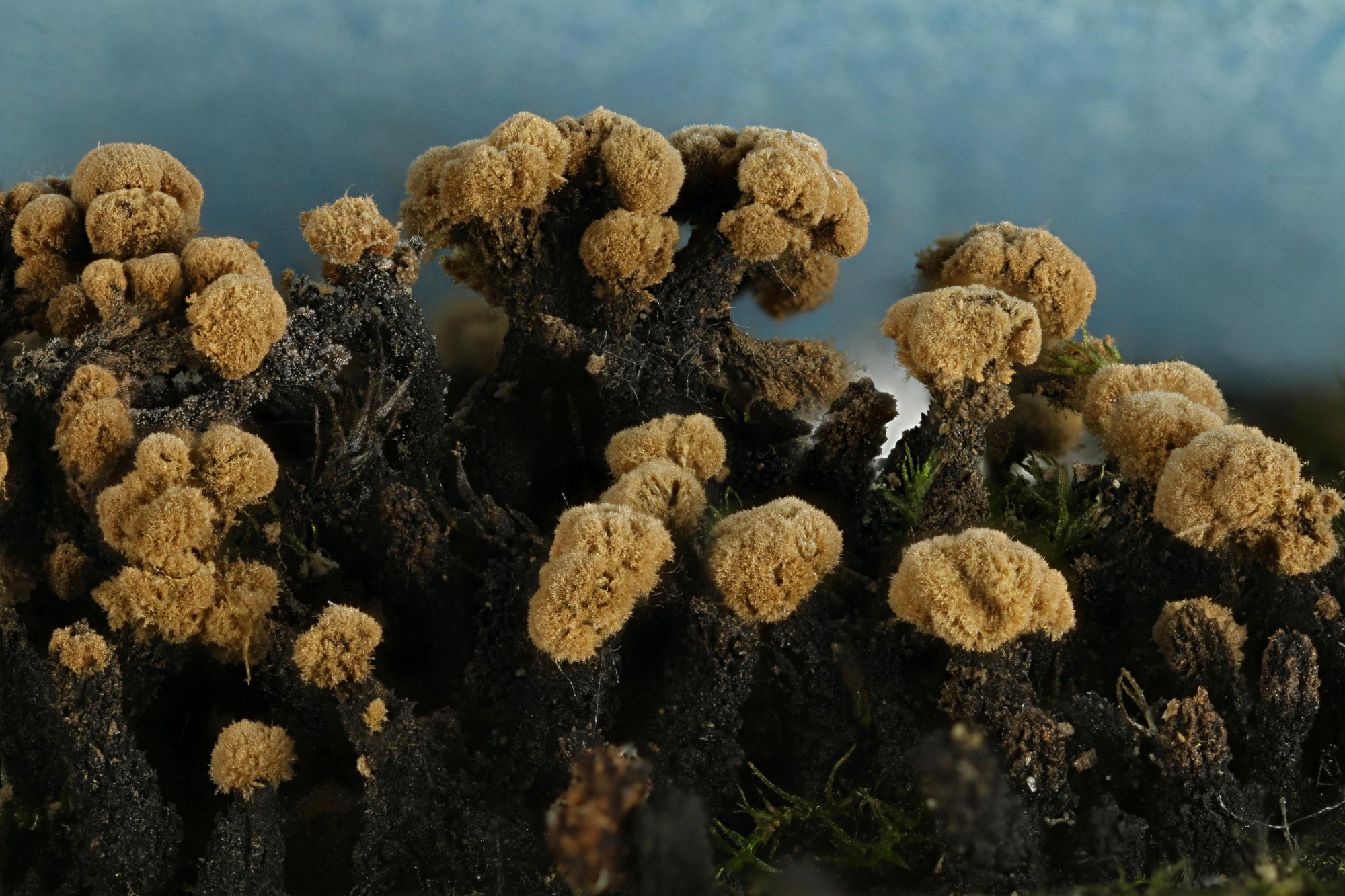

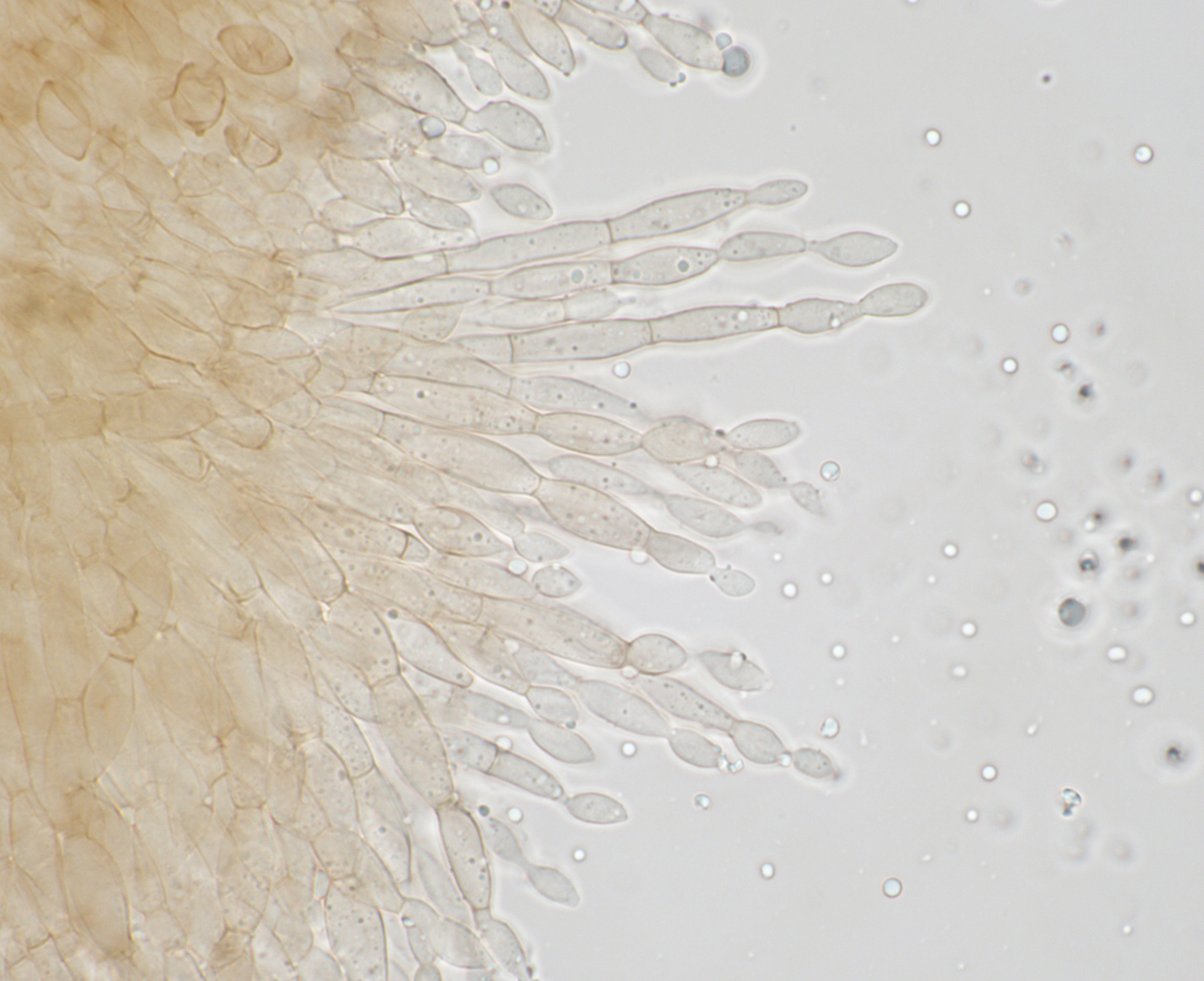
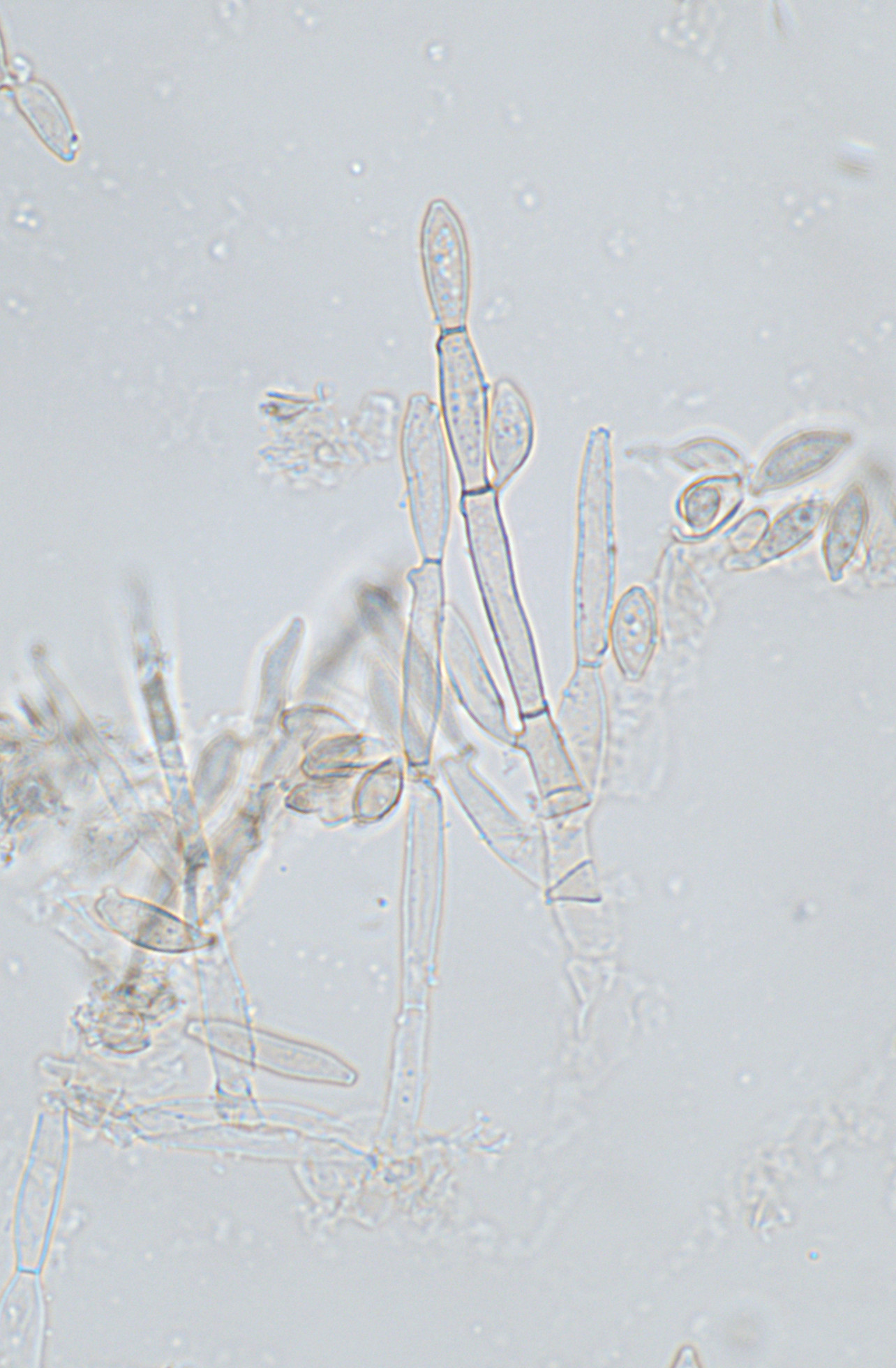
EDIT: Identified as the Haplotrichum (=Oidium) aureum state of Botryobasidium aureum (thanks to Chris Yeates for this ID). Here is the relevant page from Corticiaceae of Northern Europe Vol. 2(lots of other free monographs also on this link)
 JohnKeymasterJohnKeymaster
JohnKeymasterJohnKeymasterThanks Doug. Yes, the spores seem to fit with verrucosum as described by FoS, vol 2 p384 under the entry for S.areolatum.
“the most reliable differentiating feature is the size of the spores, which in S. verrucosum are 8-11.6 mm with spines 1-1.4 mm long (GROSS et al. 1980)”
Macroscopically the outer surface of the perideum was quite smooth (without scales) which is a bit inconvenient. However, from the images I can find online it seems quite variable in appearance. I also read somewhere that it can shed its scales as it matures.
JohnKeymasterFirst Inocybe of the year…
Thanks Doug.
JohnKeymasterThat’s a good find and identification – I couldn’t find much information about it other than it is rarely recorded.
-
AuthorPosts
